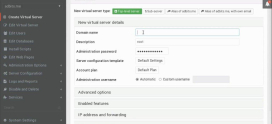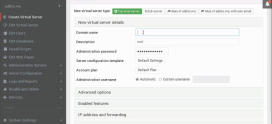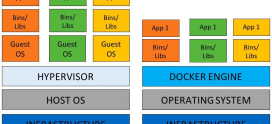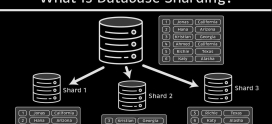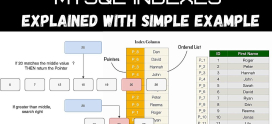
How to Migrate from MySQL to MariaDB: A Complete Guide
Switching from MySQL to MariaDB can feel like climbing a mountain without a map. Do you find yourself wrestling with questions like, “Is it worth the effort?” or “What if I mess something up?” You’re not alone! Many database administrators and developers face these challenges, which can be daunting. But don’t worry; this guide is tailored just for you. We’re here to walk you through each step and reassure you that this migration can lead to improved performance, enhanced security, and better support for your applications.
Imagine upgrading your vehicle from a reliable old sedan to a sleek, modern SUV. Sure, it might take some time to figure out all the tech features, but the smooth ride will be worth it! Similarly, migrating to MariaDB will open up new opportunities for your data management needs.
In this article, we’ll break down the migration process into manageable steps, provide practical tips, and address common pitfalls to avoid. By the end, you’ll have a complete understanding of how to successfully transition from MySQL to MariaDB. Ready? Let’s dive in!
Understanding the Basics
First things first, you may be wondering, “What exactly is MariaDB?” In simple terms, it’s an open-source relational database management system that was created as a fork of MySQL. While it retains much of MySQL’s functionality, it introduces enhancements that can significantly boost your database’s performance and security.
Why Migrate to MariaDB?
Before we get into the nitty-gritty, let’s discuss why you should consider this migration. Here are some compelling reasons:
- Performance Enhancements: MariaDB often runs faster than MySQL, especially under high load.
- Open-source Advantage: MariaDB is fully open-source and enjoys an active community of support.
- Advanced Features: It supports advanced indexing and storage engines that improve database efficiency.
- Security Improvements: MariaDB frequently updates its security protocols to keep your data safe.
Assessing Your Current MySQL Setup
Before you pull the trigger on a migration, it’s essential to evaluate your current MySQL environment. Some crucial areas to consider include:
Data Structure and Size
Take note of the size of your databases, the number of tables, and the types of data you’re storing. This analysis will help you anticipate challenges in the migration process.
Application Dependencies
What applications depend on your MySQL databases? List them! Understanding these dependencies will allow you to plan your migration with minimal downtime.
Custom Queries and Configurations
If you’ve customized queries and configurations in MySQL, document them. This information will be vital for ensuring your applications continue to function seamlessly post-migration.
Preparing for Migration
Preparation is key to a successful migration. Here are steps to follow:
Create Backups
Back up your existing MySQL database to safeguard against any mishaps during migration. You can use tools like mysqldump or any reliable backup software to do this.
Choosing the Right Version of MariaDB
Making sure you’re using the right version of MariaDB is crucial for compatibility. Check the official MariaDB website for the latest stable version that suits your needs.
Migration Process
Now that you’re prepared, let’s move on to the actual migration process. Here’s how to do it step by step:
Step 1: Install MariaDB
You can install MariaDB on your server by following the instructions on the MariaDB website. Most operating systems provide simple installation commands, like APT for Ubuntu or YUM for CentOS.
Step 2: Data Migration
Once MariaDB is installed, it’s time to migrate your data. Use the mysqldump command to create a dump file of your MySQL database, then import it into MariaDB using the mysql command.
- Dump the MySQL database:
mysqldump -u [username] -p [database_name] > dumpfile.sql - Import into MariaDB:
mysql -u [username] -p [new_database_name] < dumpfile.sql
Step 3: Configuration Adjustment
After data migration, you’ll need to adjust configuration files to suit MariaDB. The my.cnf file is where you’ll want to make any necessary changes.
Step 4: Testing
Before you go live, it’s essential to thoroughly test your applications with the new MariaDB setup. Look for any issues, especially with custom queries and configurations. This step ensures a smooth transition for end-users.
Step 5: Going Live
Once testing is complete and you’re confident in your new system, you can switch your applications from MySQL to MariaDB. Monitor performance closely during this phase.
Post-Migration Tips
Your work doesn’t end after migration. Here are some post-migration practices you should consider:
Monitor Database Performance
Keep an eye on how MariaDB performs compared to MySQL. Various tools are available for database monitoring, including MariaDB’s built-in monitoring tools.
Ongoing Security Updates
Regularly check for updates and patches for your MariaDB installation. Staying current is key to maintaining data security.
Get Involved with the Community
MariaDB has an active community offering support, plugins, and tools that can enhance your experience. Join forums, read blogs, and seek advice whenever needed.
FAQs
Is MariaDB fully compatible with MySQL?
Yes, MariaDB is designed to be a drop-in replacement for MySQL, meaning most MySQL applications will work with MariaDB with minimal changes.
Do I need to modify my SQL queries after migration?
In most cases, your existing SQL queries should work without modification. However, take the time to test them in the new environment to identify potential changes.
What is the best way to back up my MySQL database before migrating?
The best method is to use the mysqldump command, which efficiently creates a backup of your databases in a single SQL file.
Do I need to train my team on MariaDB?
While the transition is generally straightforward, spending some time on familiarization may help your team become more effective and take full advantage of MariaDB's features.
How can I ensure performance post-migration?
Consistently monitor your database performance with appropriate tools and be on the lookout for optimization opportunities as you continue to use MariaDB.
Conclusion
Migrating from MySQL to MariaDB might seem overwhelming at first, but with the right preparation and approach, it can be a smooth journey. By following the steps outlined in this guide, you’ll unlock the benefits of using MariaDB—including better performance and enhancing security.
Remember, taking it one step at a time helps ease the transition. Now that you’re equipped with valuable knowledge, why not start your migration today? If you hit any bumps along the way, know that a robust community and resources are available to support you. Happy migrating!


